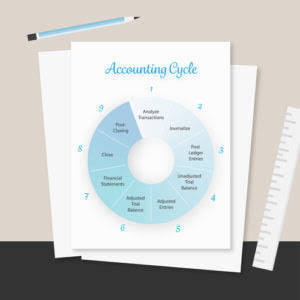
In a nutshell, we can say that cash flow from investing activities reports the purchase and sale of long-term investments, property, plants, and equipment. When a company makes long-term investments in securities, acquires property, equipment, vehicles, or it expands its facilities, etc., it is assumed to be using or reducing the company’s cash and cash equivalents. As a result, these investments and capital expenditures are reported as negative amounts in the cash flows from investing activities section of the SCF.

How are Cash Flows from Investing Activities Calculated?
- For example, funding operations linked with poor labor conditions or environmental degradation can question the firm’s commitment to CSR.
- For the past 52 years, Harold Averkamp (CPA, MBA) hasworked as an accounting supervisor, manager, consultant, university instructor, and innovator in teaching accounting online.
- Cash and Cash Equivalents also consist of investments that have a maturity period of three months or less from the date of acquisition.
- Cash Flow from Financing Activities is the net amount of funding a company generates in a given time period.
- A change to property, plant, and equipment (PPE), a large line item on the balance sheet, is considered an investing activity.
- If net cash flows from investing activities are negative, it means that there is a net addition to long-term assets, and vice versa.
Primarily, it offers a clear indication of a company’s investment in its future growth and productivity. A positive net cash flow from investing activities demonstrates that a company is divesting more than it is investing, while a negative figure indicates a higher level of investment in future business growth. Hence, it is typical for rapidly growing firms to have negative cash flow from investing activities. When it comes to preparing a statement of cash flows, most companies use the indirect method.

2: Differentiate between Operating, Investing, and Financing Activities
- This is because, even if there is a negative cash flow from investing activities, it often indicates that your company is in a growing phase.
- As an analytical tool, the statement of cash flows is useful in determining the short-term viability of a company, particularly its ability to pay bills.
- The direct method involves listing all individual cash inflows and outflows from investment activities.
- Changes in working capital balances since the last reporting period are also considered.
- On the other hand, cash outflows often occur when a company invests in new assets, such as buildings, land, machinery, vehicles, or even intellectual property.
Transactions related to investing https://amely.ghenceastudio.com/?p=7123 activities are generally categorized into cash inflows and cash outflows. Cash inflows result from selling assets or investments, while cash outflows occur when a company purchases new assets or investments. In financial statements, investing activities are reported in the cash flow statement as one of the three primary sections—operating, investing, and financing activities. The focus on investing activities helps stakeholders assess the company’s capital expenditures, as well as its strategy for acquiring assets that can yield returns over time. The differences between operating, investing, and financing activities lie in their distinct roles within a company’s financial framework. Operating activities focus on generating revenue and maintaining daily operations, primarily reflected in the income statement.
- These ratings often refer to environmental, social, and governance (ESG) criteria, with particular attention paid to a firm’s investing activities.
- However, it is also to be noted that many big and well-established companies also have a negative investing cash flow, mainly because of heavy investments done, whose return will take some time.
- Thus, net income has to be adjusted by adding back all non-cash expenses like depreciation, stock-based compensation, and others.
- Long-term productive assets (also known as non-current assets or fixed assets) are purchased to be kept and used in business for a long period of time.
- The Institute of Chartered Accountants in India has issued Accounting Standard AS – 3 revised for the preparation of cash flow statements.
- When a company engages in investing activities, it either spends cash (outflows) to acquire assets or generates cash (inflows) from the sale of assets.
Capital Rationing: How Companies Manage Limited Resources

See how these cash flows reflect a company’s strategic growth and financial future. Investments are a little more complicated than the long-term assets because it depends on the source of the investment. For example, cash paid for short-term QuickBooks Accountant investments like trading securities and cash equivalents are included in this section.
In the direct method, the operating activities section directly lists the cash flow items, such as cash received investing activity accounting from customers and cash paid to suppliers, without starting from net income. It provides a more detailed view of the cash flows related to operating activities. Non-cash transactions on the cash flow statement refer to activities that do not involve an actual movement of cash. Examples of non-cash transactions can include the issuance of common stock in exchange for assets, the conversion of debt into equity, and the transfer of assets or liabilities without any exchange of cash.
- As we discussed, the investing activities in the cash flow statement play an important role in evaluating the company’s performance by investors and other stakeholders.
- For instance, acquiring a new piece of machinery will increase the assets on the balance sheet, while selling an investment may decrease asset totals.
- It reports how much cash has been generated or spent from investment-related activities in a specific period.
- Operating cash flows also include cashflows from interest and dividend revenue interest expense, andincome tax.
